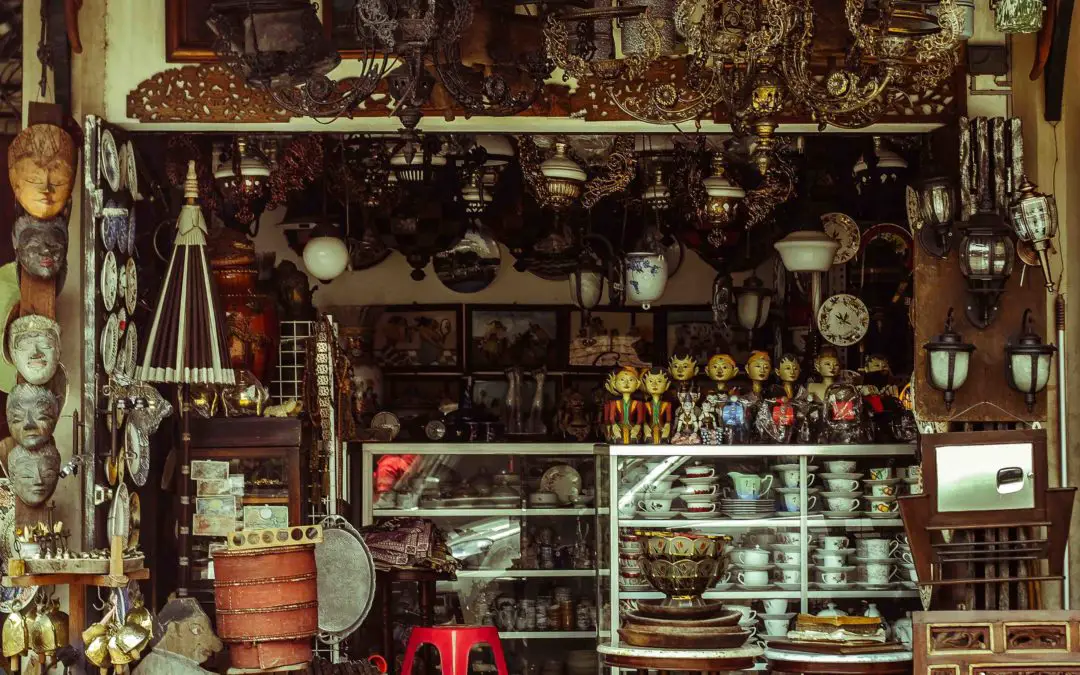I don’t know anyone, apart from my Dad, who actually enjoys haggling. Most of us, from Western countries especially, are never taught how to bargain as it’s a pretty useless skill in most day-to-day shopping activities back home. It’s not in a lot of the rest of the world.
In a lot of the world it’s essential to be able to bargain if you don’t want to spend your entire time being WIDELY ripped off. Haggling is the norm in a lot of places. It’s not offensive or rude behaviour, in fact it is the expectation that you will haggle.
But when you’re not used to it the whole experience of haggling can be extremely uncomfortable and stressful.
It’s so expected in some places that you will bargain that the sellers set prices reflect this, i.e. the first price you are given will be hugely over what you should pay or what the shopkeeper excepts you to pay since they are anticipating that you will haggle.
It is therefore essential when travelling that you learn to haggle and get more comfortable with it otherwise you will be ripped off time and time again.
The difference between the starting price of some items and the price you buy it at can be astronomical.
In India for example when looking at scarves I was told the ones I liked were £20 ($30 USD). I ended up buying them for £3 ($4.50 USD) each.
Similarly when a friend of mine arrived in the Philippines, the first taxi he asked the price of said £30 ($45 USD). The journey should cost £3 ($4.50 USD).
Haggling is not just about saving 20p here or there.
In countries where bargaining is the norm, it’s the difference between spending just a few pounds on something to a day or two’s worth of budget on a single purchase.
I cannot stress enough how important it is to become comfortable with bargaining if you are going to be traveling on a budget. Your competence in it will not only effect the price you pay for taxis and clothes it will effect the price you pay for everything; from hotels, to scooter rentals, to language schools and even beer.
Before I go any further, there is an important rule to remember when haggling though.
As much as you don’t want to get ripped off you shouldn’t go in wanting to rip the other person off either. The aim is to get a fair price for the item you’re buying so you both walk away from the transaction happy.
Don’t be that person who stands there for 20 minutes haggling over 20p. EVER.
If the shopkeeper has dug their heels in that much it’s probably because they’ve reached the point at which they’re not making enough money from the sale if they go ahead with it at a lower price. And bear in mind that 20p probably means a lot more to them than it does to you.
But you absolutely should bargain. Locals do it all the time in those areas and they do it will so here are my top tips for not only bargaining but how to bargain like a local specifically.
Top Tips for How to Bargain Like a Local
1. Always be willing to walk away
If you’re not willing to let the item go if the price doesn’t move enough you will most likely end up paying more than you should for it.
2. Do actually walk away
Walk away and say you’re going to have a look around or think. As soon as your feet start moving towards the door 9 times out of 10 the vendor will throw a string of lower prices at you to stop you from leaving.
3. If number 2 happens but you’re still not sure about the price say again you’re going to think about it.
This time when you say you’re going to think about it you then need to actually leave.
There are two things you can then do:
-
- Go to the shop next door that probably has identical stock, tell them the price you were offered and see if they’ll beat it. You could then go back to the original shop and try to get an even lower price but again remember don’t push it so far you rip someone off.
Or
- Don’t go to the next shop but just go back to the original shop 5 minutes later with the amount you are willing to pay in exact cash in your hand. Hold it out to the shop keeper whilst saying how much you’re willing to pay. If they don’t take it, the item is not for sale at that price. It’s much harder for someone to refuse a sale if the cash is right there in front of them so unless you really have pushed the price too low they will probably accept the offer.
4. Learn a bit of the local language
If you’re foreign and can bust out even the smallest amount of words in a local language it will take you a huge way towards getting the seller to lower their price. As with any business negotiation techniques you need to build a rapport with the other person. This is what speaking their language does. It shows you care and how tried. So it makes them like you more, especially if you do it with a smile.
It also implies that you know what you’re doing as the more of a language you can speak the longer someone will assume you’ve been in that country and therefore that you know how things go and have a better idea of what the prices should actually be.
BONUS TIP: How To Bargin for a Taxi
When it comes to haggling for a taxi, tuk-tuk* or whatever mode of transport you’re taking make sure you do it up front.
You’ve lost your bargaining power by the end of the journey.
Never get in a taxi or the like without first agreeing the price.
And make sure you have small change or the negotiating may not have been worth it anyway since they may claim, or actually not have, any small money for change.
If the taxis in the area you are in have meters insist it’s turned on and be willing to wait a couple of taxis to find one that will use the meter**. If the taxis all still refuse to use the meter offer to pay a small amount over the meter price so the taxi driver is still getting more than normal but you know that you won’t be hugely over charged.
Got any other tips for how to bargain like a local? Let me know in the comments below
*A tuk-tuk is a taxi that’s constructed out of a motorbike and carriage attached to the back providing space for passengers to sit in. In a lot of South-East Asia this is one of the most common and cheapest forms of transport although the name for these 3-wheeled taxis varies from tuk-tuk to auto to auto-rickshaw depending on the country you’re in.
**It is very common for taxis to refuse to use the meter in a lot of countries if you’re foreign hence why it may take a few tries to get one to agree to do so.
Like it? Pin it.
Related Posts
Avoiding Food Poisoning While Traveling
A lot of people get really paranoid about getting food poisoning when going traveling. It’s an understandable concern. No one wants to spend a week stuck inside sprinting between the bed and the toilet, especially if in a hostel, when you could be out...
Reducing the Impact of Theft
Unfortunately no travel safety tips will ever be able to completely remove the risk of anything bad happening on your travels. The good news is however that travel is actually a lot safer and no way near as risky or dangerous as people, and the news, like to make out....
The Best Travel Money Solution
Finding the best travel money solution is incredibly important as aside from your passport, having access to money is the second most important thing while travelling. But circumstances frequently work against us whilst traveling to make accessing money...
Learning How to Drive a Scooter
Learning how to drive a scooter isn't actually that complicated but it does take some practice. It's mostly a balance thing but there are a number of other important elements to be aware of. I learnt how to drive a scooter for my travels in Asia where there are plenty...
Why I Cover Up when Traveling, even though I’m a Feminist & Detest Victim Shaming
There aren’t many things I hate with a passion; racism, homophobia, sexism and victim shaming are about the only ones that make the list. Unfortunately, traveling in Asia for the last two years I’ve witnessed a lot of all four. In fairness, I witnessed a...
Monkeying Around
I feel it’s only fair to warn you now that if you’re about to go travelling, it will make you dislike monkeys. "But monkeys are so cute?” I hear you cry. I thought so too, until I travelled in Asia, a lot. The first place I stopped on this trip to Asia...












0 Comments